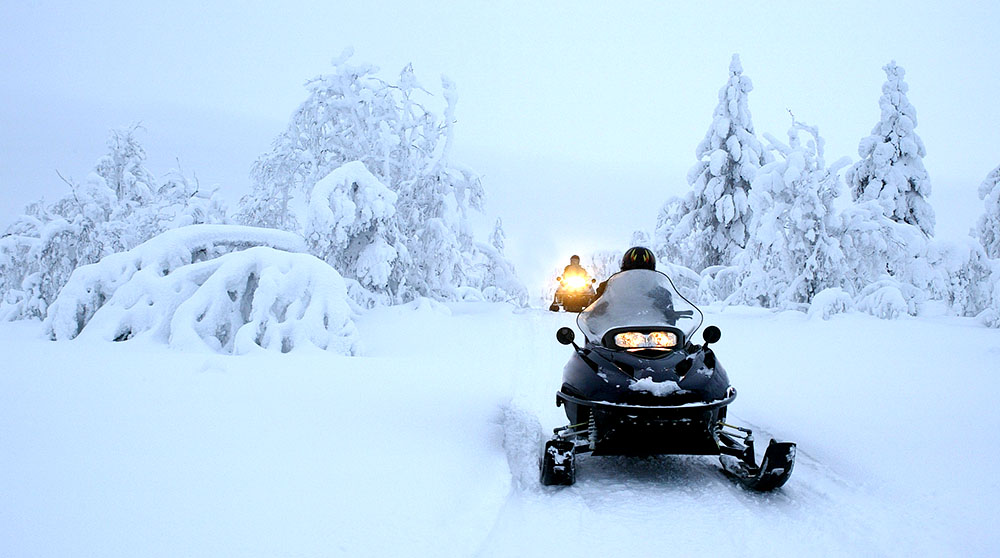Some plants and animals might spend winter hibernating, but for snowmobilers, this season is when the action really gets going. Other than a lack of snow, the only thing that can ruin the occasion is a nasty accident. An important way to avoid tragedy is by getting a better understanding of what terrain these amazing machines can handle and what should be considered off limits. This goes for beginners and serves as a reminder for veterans. Grass and hard pavement are manageable for short distances but only at low speeds and in straight lines. Snowmobile skis don’t steer well on either surface, and hard pavement looks like very rough sandpaper to a snowmobile. The broadest categories of hostile turf are as follows.
*Unmarked Trails
*Fresh Snowfall
*Ice
*Water
Unmarked Trails
Snowmobiles were meant to tackle snow. They’re not very good with anything else, and snow has a bad habit of hiding anything else. Marked trails have been checked for hidden hazards like fallen tree branches or large rocks that can entangle a snowmobile or flip it over. Unmarked trails through mountainous terrain possess the added threat of an avalanche. Telltale signs include heavy snowpack on steep mountain sides and snow overhangs along mountain ridges. Designated trails are also relatively smooth and have snow that’s the right consistency to provide snowmobiles with good traction.
Fresh Snowfall
It might sound contradictory, but not all snow is snowmobile-friendly. The ribs on a snowmobile track need well-packed snow to push against. Fresh snowfall can be powdery. A snowmobile track will just kick it up without much forward movement. A bigger problem is that it doesn’t take many inches of the stuff to hide obstacles. Even heavy ruts and ridges capable of throwing a snowmobile on its back can disappear as blowing snow fills in low spots and presents a level surface. If the blanket of snow is combined with overcast skies, it creates whiteout conditions where it’s practically impossible to detect any uneven spots or calculate distances.
Ice
This is one substance that a snowmobiler should always avoid if possible. Even under the best of circumstances, a hard surface like ice won’t allow the ribbed track on a snowmobile to dig in and get sufficient traction. It’s noticeable when trying to accelerate. It’s extremely noticeable when the brakes are applied. As if this wasn’t enough, the front skis can cut through snow but not ice. Turning doesn’t often go according to plan. Finally, where there’s ice, there’s water. Cracked or thin ice will often have pools of water sitting on it that appear darker than the surrounding ice. If flowing water can be seen below a clear layer of ice, it’s definitely too thin.
Water
If it wasn’t for the sport of snowmobile skipping, this wouldn’t have to be included on the list. The important thing to keep in mind here is that snowmobiles used for this activity are customized with buoyant tracks and all superfluous weight stripped off of the machine. It should be noted that snowmobile skipping contests only occur during the summer when the water is warm enough. It’s also common for competitors to have their snowmobiles wind up at the bottom of the lake during these contests. In order to successfully get a snowmobile across a body of water, it has to be kept on a straight path with the throttle wide open. This is a valuable lesson you can apply if you unavoidably hit a patch of water on the trail.
About the Autor:
The guest post was brought to you by SnoWest Snowmobile Magazine, a digital and print subscription offering the latest news, equipment and snowmobile reviews for the beginner to the most hard core snowmobile enthusiasts.



